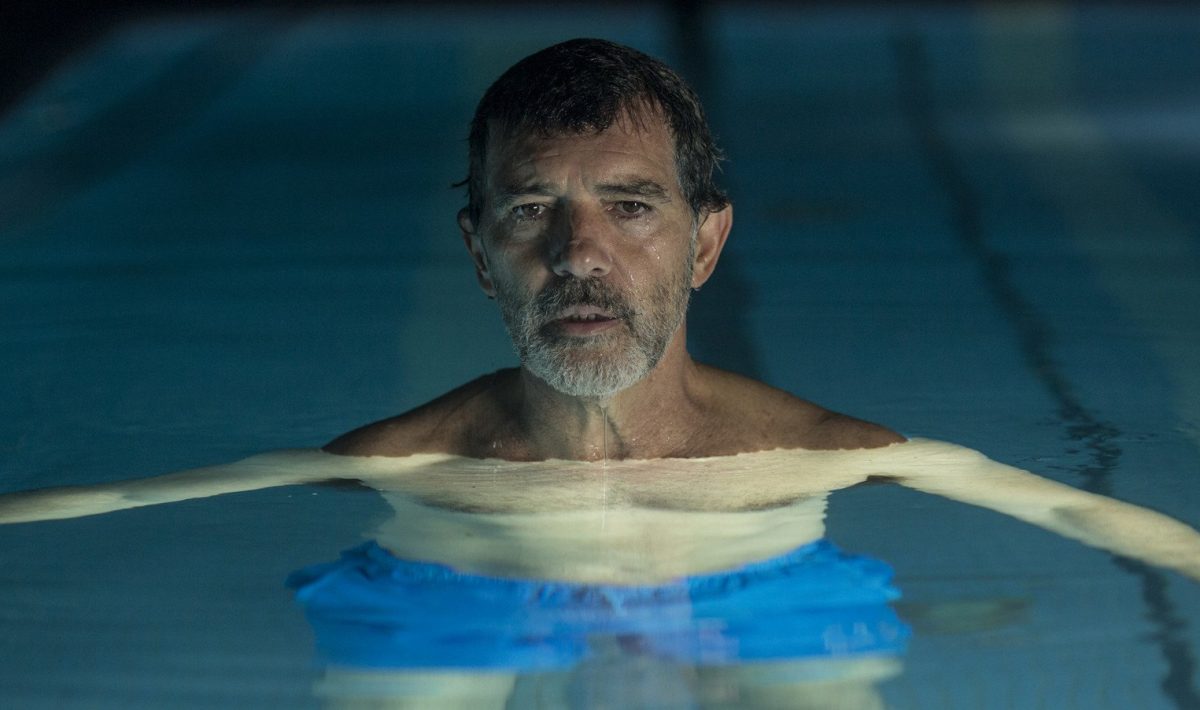If someone asked me to describe in one word the character of Pedro Almodóvar’s cinema, I would say that it is sentimental. I could also invite that person to the Pain and Glory screening – a movie which is not only autotherapeutically approaching the artist’s biography, but also telling about the relationship between cinema and memories. The latest film by the Spanish master is filled with references to his previous achievements and interwoven with personal threads. In this sense, when one asks about the character of the artist’s original cinema, in Pain and Glory one gets a slightly more complex answer than just “sentimental”.
Almodóvar’s alter ego, Salvador Mallo (Antonio Banderas), is an aging director suffering from depression and chronic backache. He experiences not only a crisis related to health, but also a creative crisis, fueled by memories of childhood and early artistic work. In memories, this childhood is not gloomy, sad or tearful, but it rather creates longing for a time when cinema smelled of “piss, jasmine and sea breeze.”
Precisely, director’s relation to cinema seems to be a key. Cinema for Almodóvar is more than just a reproductive tool imitative to our reality. For him, it is a kind of projection of life itself, a medium through which we look into reality as real as ours. Equally real, but more beautiful, because it consists of memories and dreams – which usually drift away from reporting facts in favor of aesthetics.
In one of the most important sequences of Pain and Glory, we are transferred to the theater – which is not surprising, because the artist always liked to refer to various muses and he was also adapted for the stage. Behind this action lie the differences between theater and cinema presented by the director. The theater releases emotions and evokes memories – what we can observe during the monologue of Albert Crespo (Asier Etxeandia), who transforms Mallo’s text-confession to stage – while real cleansing, true expiation can be experienced only through creative work in the cinema. But neither can be isolated from one another in the Spanish artist works. Both media produce and process emotions when faced with life itself.
Almodóvar does not remain uncritical about himself. “And don’t cry on stage,” says Mallo to Crespo, “actors easily fall in tears. One truly moves who hold them back.” Since Julieta, the artist has been trying to restrain his “baroque” style, as he puts it, by softening melodramatism in favor of the introvertism of the characters. While in Julieta this recipe did not work, in intimate-reminiscent Pain and Glory, emotional restraint found appliance, allowing viewers to smoothly and longingly immerse themselves in the projection of memories.
There is no doubt that critics are right announcing Pain and Glory to be Almodóvar’s best film in years. And although the artist’s latest works still does not reach the heels of classics such as Law of Desire (1987) or Live Flesh (1997), it is a nice look back and a solid start to the adventure with the Spanish master for people who have not yet encountered him. In the end, we will find everything that the author’s author cinema accustomed us to: melodrama, gentle, male homosexuality, colorful scenery set almost against kitsch and an extremely important mother character (here played by Penélope Cruz).







